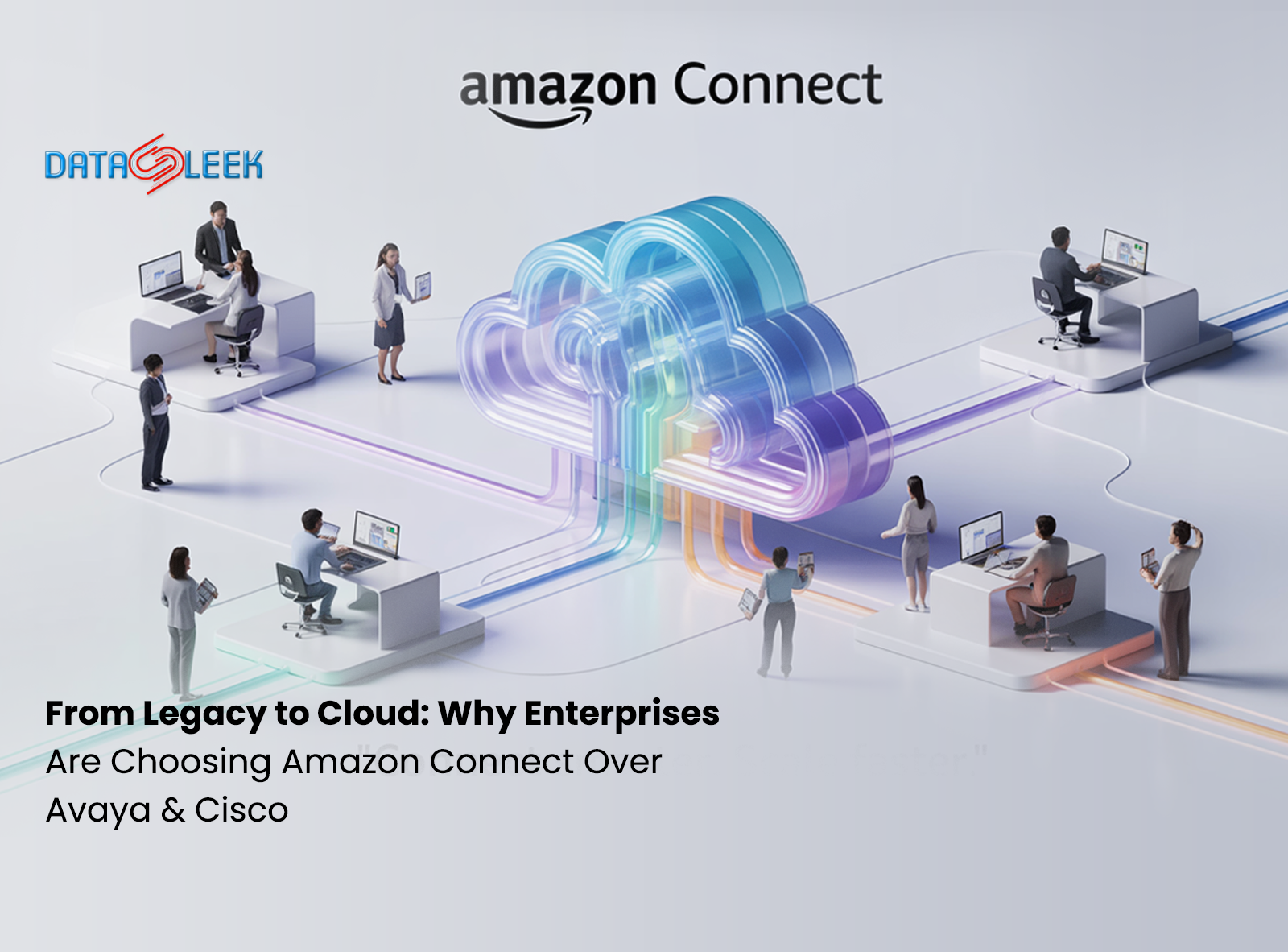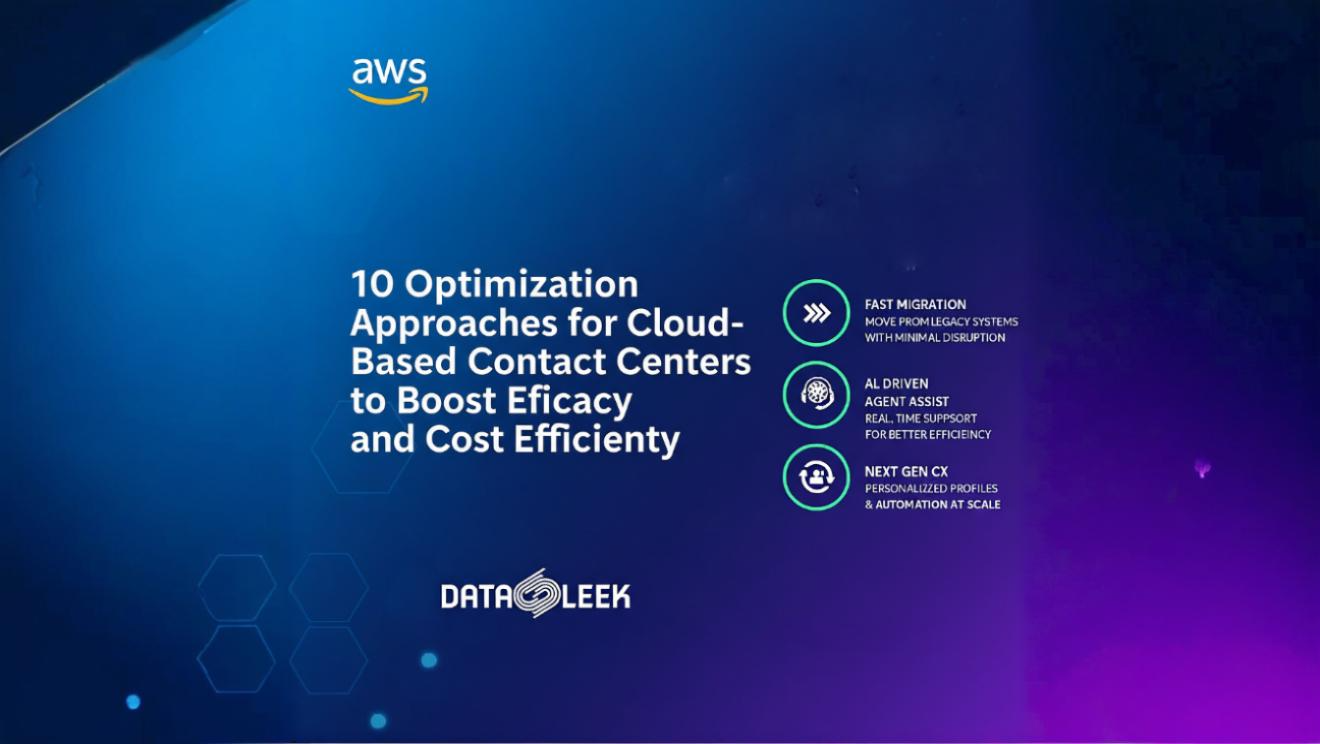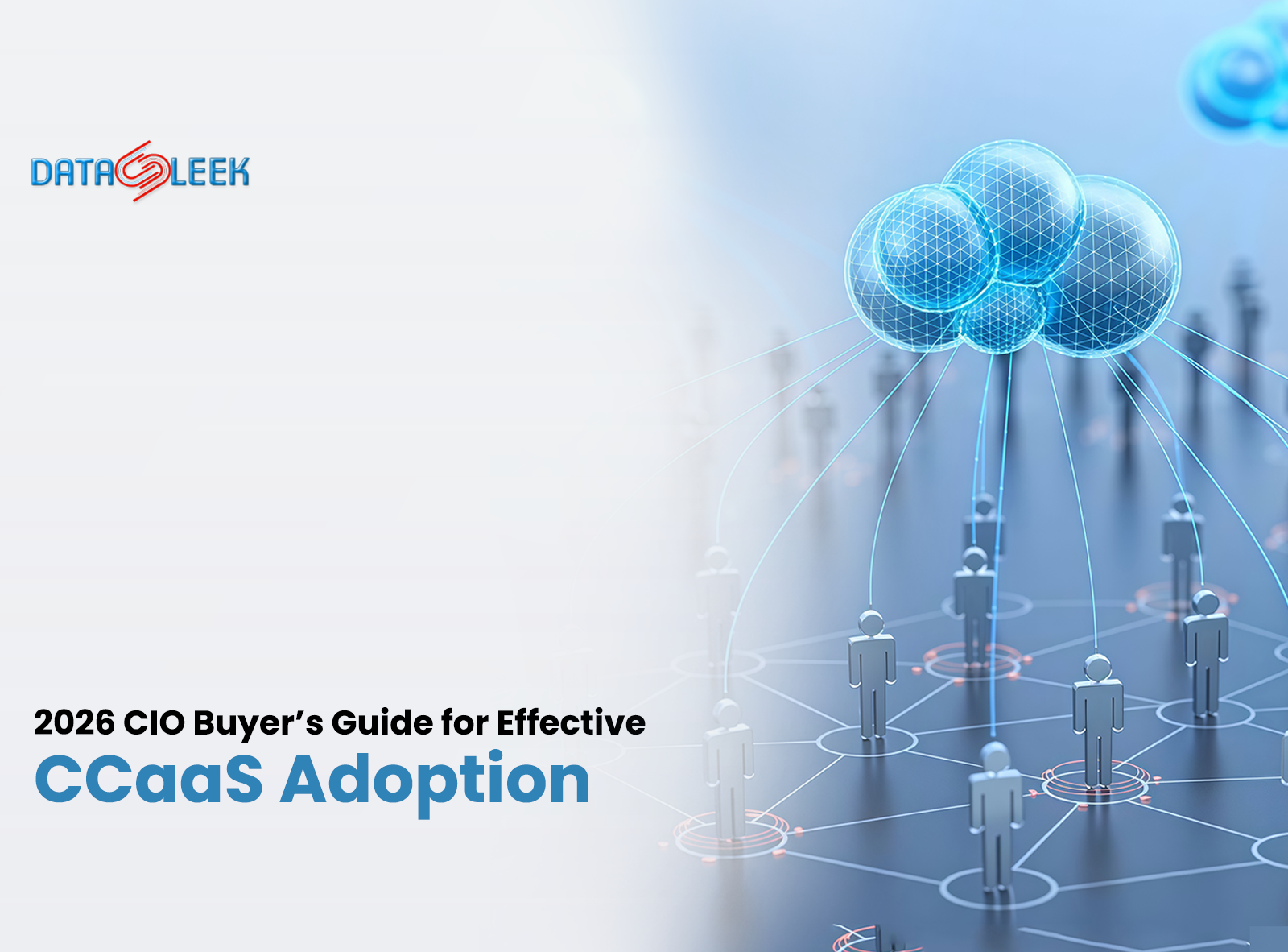For decades, Avaya and Cisco dominated the contact center market. Their on-premise solutions powered customer support for banks, telecoms, airlines, and enterprises worldwide. But as customer expectations shifted toward digital-first, AI-driven, and always-on experiences, these legacy systems started showing their limits.
Enter Amazon Connect — a cloud-native contact center platform that promises agility, scalability, and deep AI integration. The shift we’re seeing today isn’t just about moving from one vendor to another. It’s a fundamental migration from legacy to cloud — and enterprises are making this decision faster than ever.

In this blog, we’ll break down:
- Why Avaya & Cisco legacy systems are no longer enough
- What makes Amazon Connect the top choice for modern enterprises
- How organizations are actually saving costs and improving CX after migration
- And why the cloud isn’t just an upgrade — it’s the future.
Why Are Enterprises Moving Away from Avaya & Cisco?
1. The Cost of Maintenance
Avaya and Cisco contact centers require hardware-heavy deployments, costly maintenance contracts, and complex upgrades. Enterprises often pay 20–30% of license costs annually just to keep systems updated. Cloud alternatives slash these expenses by eliminating servers, PBXs, and physical infrastructure.
2. Limited Agility
Rolling out new channels (like WhatsApp, video, or in-app chat) on legacy systems is a 6–12 month project with custom coding. In contrast, cloud platforms like Amazon Connect let you add channels in weeks — sometimes days — thanks to APIs and AWS integrations.
3. Vendor Lock-In
With Avaya or Cisco, enterprises are tied to proprietary hardware, licenses, and service partners. That lock-in limits innovation. Amazon Connect, on the other hand, is open, API-driven, and flexible, letting you integrate CRM, analytics, and third-party apps seamlessly.
4. Remote Work Gaps
Post-pandemic, remote and hybrid work are the norm. Legacy systems struggle to scale securely across distributed teams. Amazon Connect was born in the cloud, so scaling from 50 to 5,000 agents — in multiple geographies — happens in real time.
5. Lack of AI & Automation
Avaya and Cisco do offer AI add-ons, but they’re often bolt-on and inconsistent. Amazon Connect, backed by AWS AI/ML services, bakes intelligence into the core: real-time sentiment analysis, automated agent assist, forecasting, self-service bots, and more.

Why Amazon Connect Is the New Standard for Enterprises
1. Cloud-Native Architecture
Amazon Connect is 100% cloud-based, which means no hardware, minimal setup, and instant scalability. You pay only for usage — no massive upfront CapEx.
Enterprises report 30–50% lower TCO compared to Avaya/Cisco migrations.
2. Omnichannel by Design
Voice, chat, SMS, email, and video are all managed in a single unified dashboard. Unlike legacy add-ons, omnichannel is built-in.
3. AI-Powered CX
With services like Amazon Lex, Amazon Polly, and Contact Lens, you can deliver personalized, AI-driven experiences:
-
Chatbots that resolve 60% of queries without agents
-
Agent assist that cuts average handle time by up to 25%
-
Sentiment analysis that improves QA visibility in real time
4. Elastic Scaling
Need to add 1,000 agents for holiday season? No problem. Amazon Connect scales instantly — without re-architecting infrastructure.
5. Global Reach
With AWS regions worldwide, you can spin up contact centers close to your customers, reducing latency and improving call quality.

Comparing Amazon Connect vs. Avaya & Cisco
| Feature | Avaya / Cisco Legacy | Amazon Connect Cloud |
|---|---|---|
| Deployment | On-premises, hardware-heavy | 100% cloud, no hardware |
| Scalability | Weeks/months to expand | Real-time elastic scaling |
| Cost Model | Upfront CapEx + AMC fees | Pay-as-you-go (OpEx) |
| Channels | Voice-first, add-ons for chat | Native omnichannel |
| AI/Automation | Limited, bolt-on modules | Deep AWS AI/ML integration |
| Remote Work | Complex VPNs & licensing | Cloud-native, secure, remote-ready |
| Innovation Speed | Slow, vendor-driven | Fast, API-driven, customizable |
Real Business Benefits After Migrating to Amazon Connect
Reduced Costs
Global enterprises migrating from Avaya/Cisco report up to 40% cost savings in the first year alone — mainly from reduced hardware, lower AMC, and pay-per-use pricing.
Faster Time-to-Market
New features like video calling, WhatsApp integration, or predictive routing can be live in 2–6 weeks, compared to months with legacy.
Improved Customer Experience
-
25% faster resolution times with AI-powered workflows
-
Higher NPS due to omnichannel engagement
-
Reduced agent churn thanks to simplified dashboards
Future-Proofing
Amazon Connect is continuously updated by AWS — no costly migrations or downtime every few years. Enterprises get new features automatically.

Case Study Snapshot: Travel Industry
A global travel brand migrated from Cisco to Amazon Connect:
-
Reduced infrastructure costs by 45%
-
Rolled out multilingual AI chatbots in 6 weeks
-
Scaled to support 20,000+ seasonal agents during peak travel times
-
Improved CSAT scores by 22% in the first year
Challenges in Migration (and How to Solve Them)
Shifting from Avaya/Cisco to Amazon Connect isn’t plug-and-play. Enterprises face:
-
Data migration issues (historical call logs, CRM data)
-
Agent retraining for new dashboards
-
Custom integrations with ticketing, ERP, and reporting
That’s where partners like Data Sleek step in — offering:
-
Pre-built migration frameworks
-
CRM and ERP integrations
-
Training and managed services
-
Custom analytics and reporting dashboards

Why This Shift Matters for the Future
This migration wave is not about cost savings alone. It’s about aligning customer experience with digital-first expectations.
-
Customers expect self-service first.
-
They want video, chat, and SMS options.
-
They prefer personalized, AI-powered support.
Amazon Connect doesn’t just keep up — it sets the pace. Legacy players like Avaya and Cisco are struggling to match the speed and innovation of AWS.

Conclusion
The decision isn’t Avaya vs. Cisco vs. Amazon Connect. The real choice is legacy vs. cloud.
Avaya and Cisco built the foundation for decades of enterprise contact centers. But the future belongs to platforms that are cloud-native, AI-driven, and scalable on demand.
Enterprises that make the shift to Amazon Connect with partners like Data Sleek are seeing lower costs, faster innovation, and happier customers.
It’s not just a tech upgrade. It’s a strategic shift in how customer experience is delivered in the digital era.




